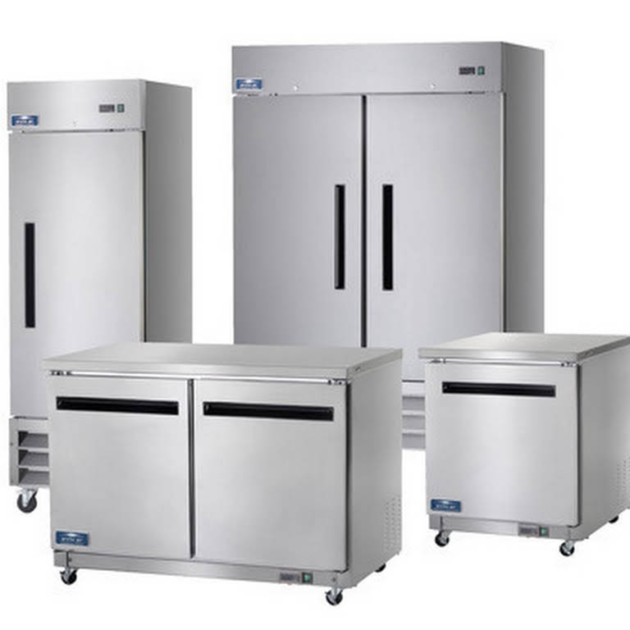
Commercial refrigeration will be critical if you want your restaurant or grocery store to run as efficiently as possible. Consider the size of your company, the design you choose, and the number of divisions incorporated into your refrigerator. Continue reading for advice on selecting the aptest commercial refrigeration equipment for your company.
The size of your equipment is one of the essential factors of commercial refrigeration. Consider the size of your business, the amount of food you intend to keep, and the length of time you expect to store it. You may also only go as large as the available space allows, so consider the size of your land as well. If you are unclear about the best size for your requirements, you can always consult with commercial refrigeration professional.
Although the style of your business may speak to aesthetics, the kind and design of commercial refrigeration you require pertain to the unit’s type and design. Commercial refrigerators, like residential refrigerators, have varied arrangements, such as side-by-side sections or a freezer on top. Depending on your demands, you may require a chiller, a reach-in cooler, or a walk-in refrigerator.
Suppose you need to store a large amount of food or keep various types of food separate. In that case, you may require additional fridge compartments. Refrigerators with more parts will be larger in size, so evaluate the area you have to work with once again.
A blast chiller is a piece of refrigeration equipment that can reduce food from a temperature of 194F to 37.4F in 2 hours.
Rapid chilling changes the structure of the ice crystals that form in the meal, resulting in smaller crystals that improve the flavor. Slow freezing creates ice crystals that rip the food, making it rough and less tasty.
Blast chillers function by pushing a substantially more significant volume of air across the surface of the food and recycling the air in the colder chamber of the device (which ordinary refrigerators do not).
Blast chillers are available in a variety of body shapes.
A dual temperature commercial refrigerator is often one colossal unit divided into two to three parts by insulated walls.
For varied storage reasons, each portion may be adjusted to a different temperature.
Worktop refrigerators are an absolute necessity for the prep line. They feature a work area on top and refrigerated storage beneath. They are usually available in refrigerated prep tables and pizza prep tables.
Walk-in refrigerators allow you to freely roam around in the refrigeration chamber while storing considerable amounts of food. The widely accessible shelves will enable you to check what raw materials you have on hand quickly.
These refrigerators are more compact, feature wheels, and are intended to be transported. Catering firms frequently employ them.
Commercial refrigerators equipped with the Energy Star symbol are up to 30% more efficient than non-Energy Star equipment.
If you can’t decide between two models that are around the same price, go with the Energy Star model to save money on your utility bill in the long run.
It may seem apparent, but you must be aware of the sorts of food that will be stored in the refrigerator. You should also consider if you want a fridge for kitchen usage, in which case solid-door reach-ins, pass-throughs, or dual-temperature models may be perfect, or if you want a refrigerator to be used in public view, in which case units with glass doors may be preferable.
The amount of storage you require will also influence the size of the refrigerator you select. If you need to refrigerate large amounts of food, a walk-in refrigerator with a remote compressor is excellent. Undercounted refrigerators are helpful for close locations.
More specialized applications necessitate more specialized equipment. A sandwich table with a workbench is handy if you own a salad bar or sandwich store. Consider your beer storage alternatives if you own a bar. A bar fridge can store bottles and cans, however, a direct draw system can store a keg and is more appealing to consumers.
Knowing where and how you’ll install your new refrigerator might make the operation go more smoothly. You may also avoid future redesigns if you have a straightforward installation strategy in place now.
The first thing to think about is how you’re going to get the refrigerator into the building. Smaller units will fit without difficulty, but two-door and three-door units will have to be equipped through the kitchen door. Walk-in boxes are more prominent, but because they arrive dismantled, they can easily pass through most conventional doorways.
Always keep your commercial glass door refrigerators well ventilated. Allow some additional room around the back and sides of the unit to allow air to flow. Check the manufacturer’s specifications for the minimum amount of clearance needed for individual models.
Ascertain that the refrigerator is situated in a well-ventilated region. Hotter temperatures can cause system failures and void warranties.
Copyright by Riddhi Display. All rights reserved.
Powered by: iKhodal Softech